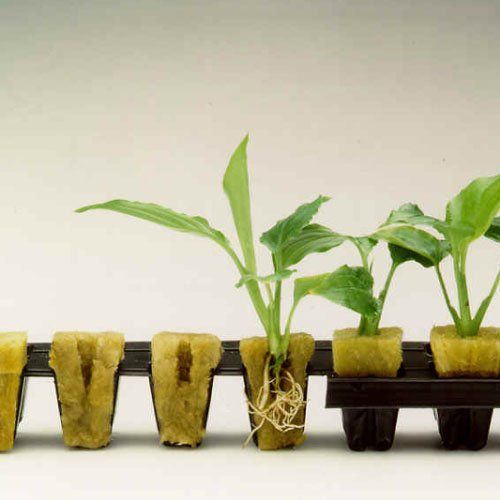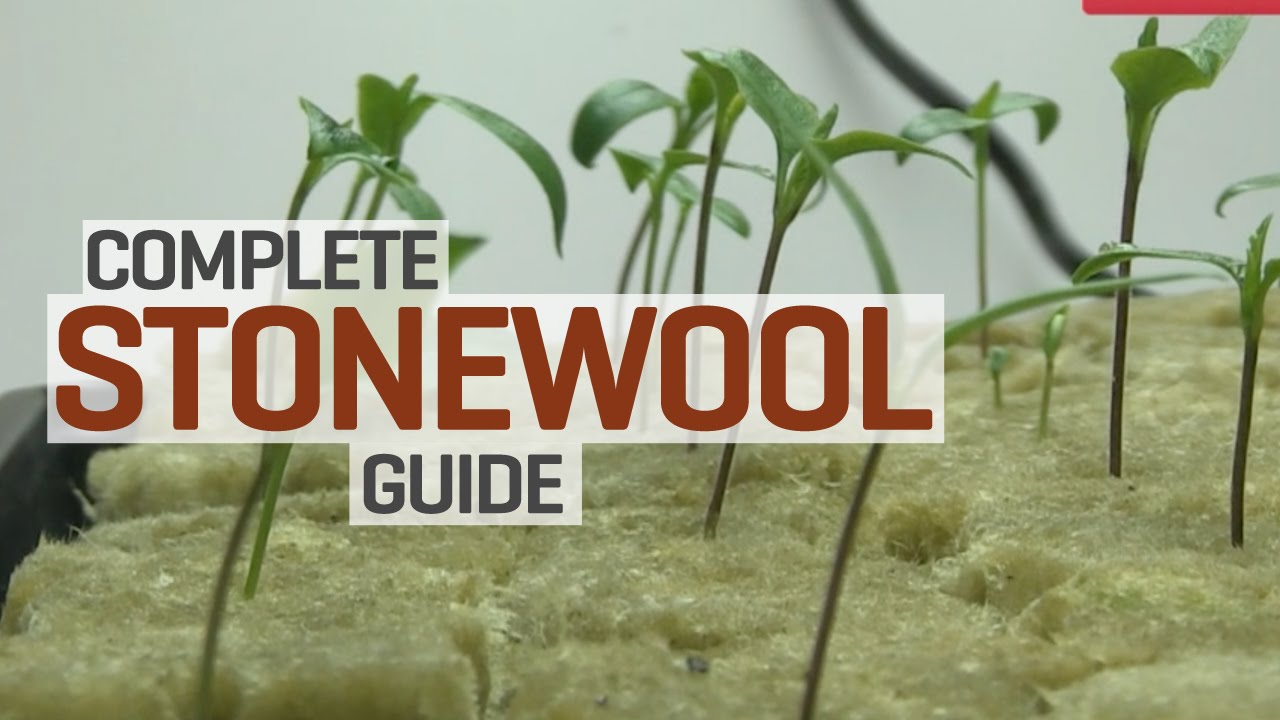Rockwool can be used in hydroponics by placing the plants in the rockwool cubes and ensuring they receive proper irrigation and nutrient solutions. In hydroponics, rockwool provides a stable and moisture-retaining medium for plants to grow.
Hydroponics is an innovative method of growing plants without soil, using water-based solutions enriched with nutrients. In this system, a suitable growing medium is essential to provide stability and support for the plants. Rockwool, a man-made mineral fiber made from volcanic rock, has emerged as a popular choice for hydroponic growers.
Its unique properties allow it to retain moisture and ensure optimal nutrient distribution to the plants. We will explore how to effectively use rockwool in hydroponics and discuss the benefits it offers for plant growth.

Credit: www.powerhousehydroponics.com
How to Use Rockwool in Hydroponics: Step by Step Guide
Choosing The Right Rockwool For Hydroponics
Rockwool is an excellent growing medium for hydroponics due to its water retention capabilities. Different types of rockwool are available, each with their own unique characteristics. When selecting rockwool for your hydroponic system, it’s important to consider factors such as density, ph level, and water absorption rate.
Higher density rockwool offers better support for plant roots, while lower density rockwool allows for better water and nutrient distribution. The ph level of rockwool should be within the optimal range for your plants, as this affects nutrient availability. Additionally, consider the water absorption rate of the rockwool to ensure consistent moisture levels for your plants.
By understanding the different types of rockwool and considering these factors, you can choose the right rockwool for your hydroponic setup.
Preparing Rockwool For Hydroponics
Rockwool is a commonly used medium in hydroponics. To prepare it for use, start by soaking the rockwool blocks. This helps to remove any loose fibers and pre-wet the material. Once soaked, adjust the ph of the rockwool to ensure optimal nutrient uptake.
Testing the ph with a ph meter or test kit is crucial. Additionally, make sure to adjust the nutrient levels in the rockwool. This can be done by adding the appropriate hydroponic nutrient solution. Properly preparing the rockwool ensures that plants can thrive in a hydroponic system.
So, by following these steps, you can effectively use rockwool in your hydroponics setup.
Transplanting Seedlings Into Rockwool
Transplanting seedlings into rockwool is a crucial step in hydroponics. It ensures successful germination and growth of seeds for hydroponic systems. Rockwool cubes provide an ideal medium for the roots to establish and absorb nutrients efficiently. When transferring seedlings to rockwool cubes, handle them gently to avoid damaging the delicate roots.
Make sure the cubes are pre-soaked in ph-balanced water before placing the seedlings into the holes. Carefully insert the seedlings and gently press the cube around the base to secure them. Maintain a stable ph level and nutrient solution for optimal growth.
Regularly monitor the moisture level and adjust accordingly. Transplanting seedlings into rockwool cubes is an effective technique that promotes healthy plant development in hydroponics.
Caring For Rockwool In Hydroponics
Rockwool is a popular choice for hydroponic setups. Proper care is essential to ensure successful growth. When using rockwool, water and irrigation techniques play a crucial role. Monitoring ph levels and nutrient balance is important to maintain optimal conditions. Regularly check the ph level of the nutrient solution to ensure it remains within the appropriate range.
Adjust the ph using ph up or down solutions as needed. Additionally, keep a close eye on nutrient levels, as imbalances can negatively impact plant growth. Regularly test the nutrient solution and adjust accordingly to provide plants with the necessary elements for healthy growth.
By closely monitoring and adjusting the ph and nutrient levels in rockwool, you can create the ideal environment for your hydroponic plants.
Troubleshooting Common Issues In Rockwool Hydroponics
Rockwool is a popular growing medium in hydroponics, but it can come with its own set of issues. One common problem is root rot, which can be recognized by the dark, slimy roots. To treat root rot, you can remove affected plants and replace the rockwool.
Another problem to watch out for is mold and algae growth. To prevent these issues, ensure proper ventilation, use a sterile environment, and maintain the right humidity levels. Regularly check for any signs of mold or algae and promptly address them.
By taking these precautions and being proactive, you can effectively troubleshoot common issues in rockwool hydroponics.
Harvesting And Reusing Rockwool
To harvest plants grown in rockwool for reuse, it is essential to clean and sterilize the rockwool properly. Start by removing the plants gently from the rockwool, taking care not to damage the roots. Rinse the rockwool thoroughly under running water to remove any remaining debris.
Next, soak the rockwool in a mixture of hydrogen peroxide and water, ensuring it is fully submerged. Let it sit for about 30 minutes to eliminate any pathogens or pests. Afterward, rinse the rockwool again under clean water to remove any traces of the hydrogen peroxide solution.
Allow the rockwool to dry completely before reusing it. This process ensures that the rockwool is free from contaminants and ready for the next round of hydroponic gardening.
Frequently Asked Questions Of How To Use Rockwool In Hydroponics
How Is Rockwool Used In A Hydroponic System?
Rockwool is commonly used in hydroponic systems as a growing medium. It provides excellent water retention and aeration properties for plant roots. To use rockwool in a hydroponic system: 1. Soak the rockwool in ph-balanced water for several hours to remove any contaminants.
2. Place the seeds or seedlings into pre-made holes in the rockwool cube, ensuring they are snugly fitted. 3. Maintain the rockwool’s moisture level by watering it regularly with a hydroponic nutrient solution. 4. As the roots grow, they will penetrate the rockwool and absorb water and nutrients.
5. Monitor and adjust the ph and nutrient levels in the hydroponic system to ensure optimal plant growth. 6. Rockwool can be reused after harvest by rinsing it with water and sterilizing it. 7. Remember to handle rockwool with care, as it can be irritating to the skin and respiratory system.
What Happens If You Don’T Soak Rockwool?
If you don’t soak rockwool, it may not retain water properly, which can lead to poor plant growth. Rockwool needs to be properly hydrated before use to ensure that it provides a suitable environment for plant roots to grow and receive the necessary nutrients.
Without soaking the rockwool, it may not hold enough water, leading to dry conditions that can negatively impact plant health. It’s important to follow the instructions for soaking rockwool to ensure optimal results and promote healthy plant growth.
Is Rockwool Safe For Hydroponics?
Rockwool is safe and commonly used in hydroponics. It provides excellent moisture retention and aeration for plant roots. It is a chemically inert and sterile medium that prevents the growth of harmful bacteria and fungi. Rockwool is made from natural rock materials and melted down to create fibers, which are then spun into blocks or slabs.
It is non-toxic and does not release harmful substances into the hydroponic system or affect plant growth. Additionally, rockwool is reusable and can be easily cleaned and sterilized between crops. It is important to note that when handling rockwool, wearing gloves and a mask is advisable due to the potential for irritation.
Overall, rockwool is a safe and effective medium for hydroponic gardening.
How Do You Plant Seeds In Rockwool For Hydroponics?
To plant seeds in rockwool for hydroponics: 1. Soak rockwool cubes in water for at least 1 hour. 2. Create a small hole in the center of the cube with a pencil or a thin tool. 3. Gently insert the seed into the hole and cover it lightly with the rockwool.
4. Place the seeded rockwool cubes in a tray or container and add nutrient solution until they are partially submerged. 5. Maintain a suitable temperature and humidity level for germination. 6. Once the seeds sprout, adjust the light and nutrient solution as needed.
7. Monitor the water level regularly to keep the rockwool moist. 8. Transplant the seedlings to a larger hydroponic system when roots start to emerge from the cubes.
Conclusion
Rockwool is a versatile and highly effective medium for hydroponics. Its unique properties, such as good water retention and excellent airflow, make it ideal for nurturing healthy plant growth in a controlled environment. By following the proper steps of preparation and usage, any hydroponic enthusiast can harness the benefits of rockwool to optimize their harvests.
The initial investment in rockwool may seem daunting, but the long-term advantages such as reusability, ph stability, and minimal risk of disease make it a worthwhile investment. As with any hydroponic technique, it is important to fine-tune the system and monitor plant health to ensure optimal outcomes.
From beginners to experienced hydroponic growers, rockwool offers a reliable and efficient solution for plant cultivation and is a valuable addition to any hydroponic setup. With its numerous advantages and compatibility with a wide range of plants, using rockwool can lead to great success in hydroponics.

